How to properly propagate succulents at home?
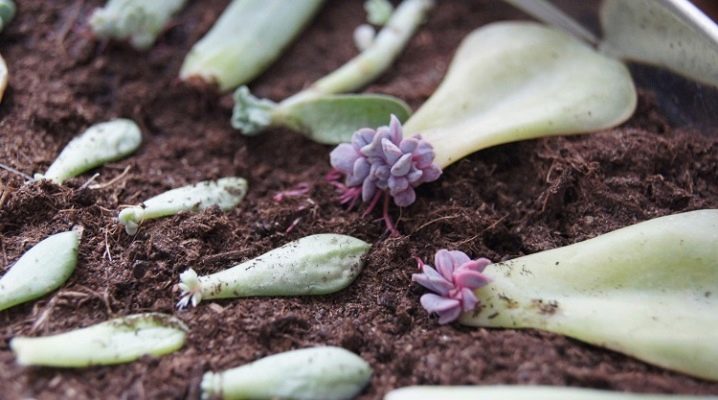
Succulents are one of the most popular plants for home decoration. They look very stylish and laconic, fitting into any interior, do not require special care and survive even in difficult conditions. Moreover, the reproduction of succulents is easy to carry out on your own, significantly saving money and time for going to the store.

Suitable soil
The easiest way is to purchase a ready-made soil mixture in the store, intended for indoor succulents or cactus. In addition to it, you will need river sand and material to form a drainage layer, most often expanded clay. Drainage is laid out in the first layer in the pot, followed by moistened soil and, finally, wet sand. Some growers add perlite to the existing ingredients.
Speaking about the soil, one cannot fail to mention the correctly selected container. It is more convenient to take a roomy and flat container where all the sprouts will fit. You do not need to choose a container that is too bulky, since in this case, succulents will begin to give all their strength to the formation of roots, and not to build up green mass. In this case, the development of the plant will slow down. The preferred materials for the pot are clay and plastic.
Regardless of the choice, it is important that a sufficient number of drainage holes are drilled in the bottom.
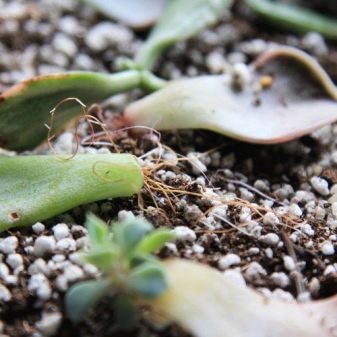
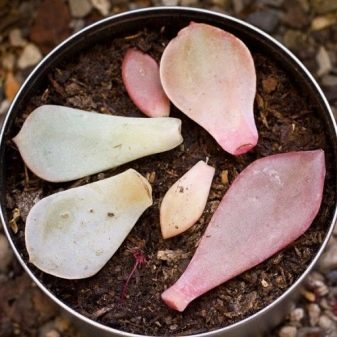
Reproduction
There are three common ways to propagate succulents.

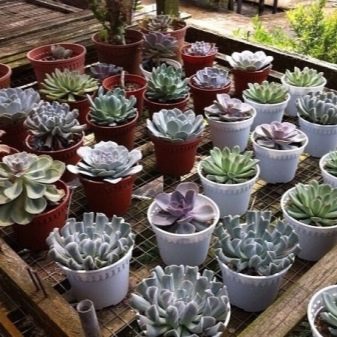
Leaves
It is very easy to breed succulents with the help of leaves, moreover, this method is the least stressful for the plant itself. Some species even shed the leaves themselves, ready to breed. In this case, the discarded fragment is simply enough to insert into the ground, it can even be in the same pot where an adult succulent grows. The land must be well watered and loosened.
In about a couple of weeks, the roots will sprout from the leaves, and they can be planted in separate pots. The leaf itself should be taken strong, healthy, without injuries.
It must be cut off with a sharp instrument, and not torn off or broken off.
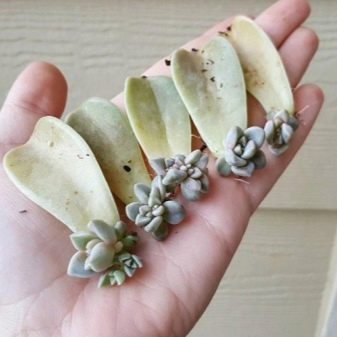
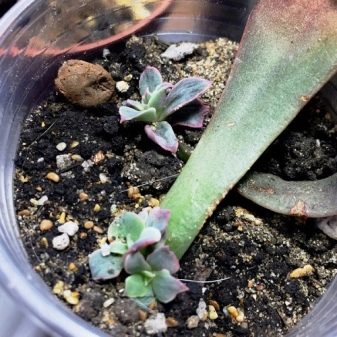
Sometimes a succulent starts the breeding process on its own. The discarded leaf itself takes root in the soil and begins to form roots. It is important to track this process in time and plant the baby away so that the root systems of both plants do not intertwine. In some succulents, the leaf size is quite large, so you will not have to use the whole leaf, but only part of it. The cut will first have to be dried for several days, and then deepened by one centimeter into a qualitatively loosened substrate.
Some experts believe that if the leaf is strong and healthy, and the soil used is well moistened and drained, then it will be sufficient to immediately put the leaf in a pot so that the cut looks at the surface. Further, the leaf will dry out and take root on its own.
At the rooting stage, it is better to irrigate the plant by spraying.
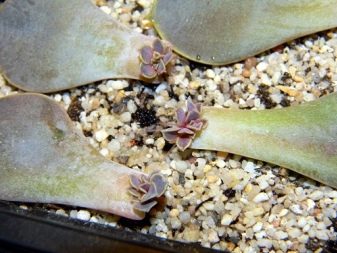
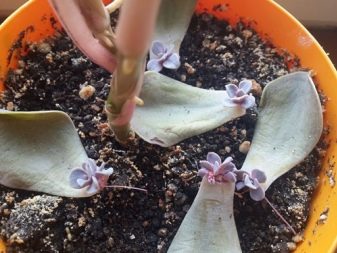
It is worth mentioning that the Eonium succulent variety reproduces only by cuttings taken from the top. This suggests that the use of leaflets in this case is impossible.
Reproduction by leaves is absolutely safe, especially when the leaf has separated on its own. In this case, there will be no wounds or stress for the adult plant.This method can be called economical, because the baby is able to form in the same pot as a mature succulent, which means that you do not have to spend money on a substrate and additional capacity. Finally, the baby practically does not need to be looked after.
The disadvantage of this method is the very slow rate of appearance of the material itself for reproduction.
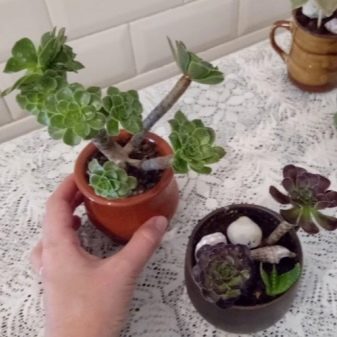
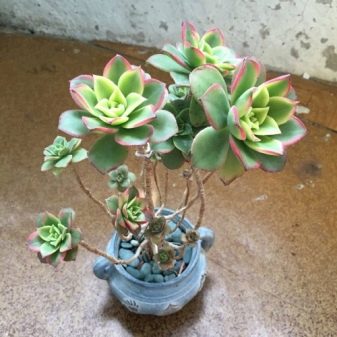
Cuttings
Propagation by cuttings is an equally popular method. The stalk is separated with a sharpened tool and set aside to dry for several days. The sections are pre-washed to remove the toxic milky juice and processed with crushed charcoal. It will be possible to plant the plant in pots only after the roots have formed. Rooting is carried out either in water or in sand.
The use of liquid implies the preparation of clean and settled water, ideally boiled or filtered. The stalk is placed in the container so that its cut does not touch the bottom. The roots will appear in about a couple of weeks, if the room is kept at room temperature and good lighting. To speed up the process, you can create a mini-greenhouse by pulling clean polyethylene over the container. Additionally, even when lowering into water, the stalk should be treated with a growth stimulant.
If the cut suddenly starts to rot, then the cutting will need to be cut, dried, treated with a growth stimulant and returned to a bowl of clean water.
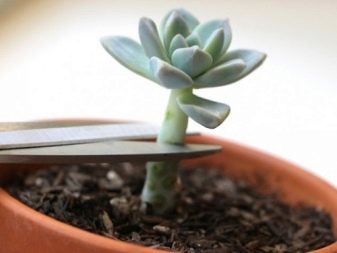

When rooting the cuttings in the sand, the substrate will first have to be sifted and calcined in the oven or fried in a frying pan. The cutting itself is treated with a strengthening compound, placed in the sand and watered with heated water. The depth of placement in the soil should be between 1.5 and 2.5 centimeters.
Cutting has significant advantages over other methods. It passes faster than with leaves and seeds. Rooting can be carried out both in water and in sand, which allows the gardener to choose the most convenient way. Finally, a young plant takes root faster and gets sick less often. However, the obvious disadvantage of this method is the harm done to the adult succulent.
A wound, even a treated one, can attract insects or provoke the appearance of diseases.
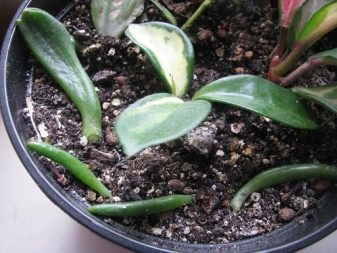

Seeds
Propagating succulents using seeds is considered a rather difficult task. Firstly, it takes a lot of time, and, secondly, it requires constant monitoring and the creation of rather difficult landing conditions. This method is much more suitable for specialists for whom the cultivation of succulents has been elevated to the status of a profession, or for experienced gardeners. In this case, proper attention will have to be paid to the selection of the seeds themselves, and the design of the mini-greenhouse, and the care of the plantings. The substrate should not retain moisture, and drainage should be of good quality.
The first leaves in this case appear after a couple of months to six months.
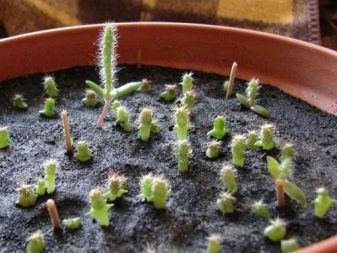
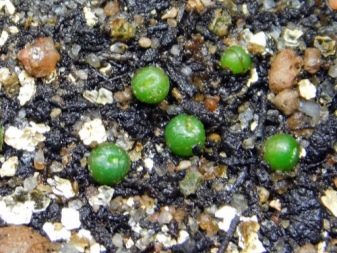
Before planting, the seeds have to be dried for a week. An alternative can be soaking for a day in a weak solution of potassium permanganate. After placing the seed in the soil, it will have to be irrigated and fertilized regularly, following the schedule. It is allowed to raise the roof of the greenhouse only when the height of the sprouts above the ground is a couple of centimeters. The optimal soil in this situation is a combination of earth and sand, calcined in an oven, on top of which a two-millimeter layer of sand is placed.
The greenhouse, by the way, can be either purchased or a regular plastic wrap. The dive is carried out somewhere in four weeks following the germination of the shoots.
However, seating at permanent residences can be carried out only after six months.
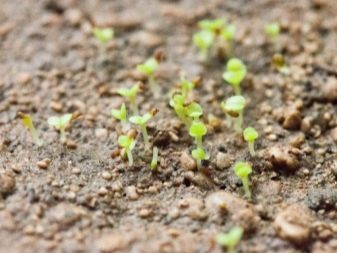
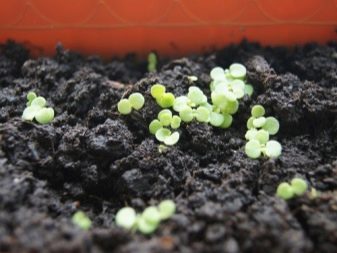
Further care
A succulent plant belongs to unpretentious plants, therefore, even an amateur plant breeder can cope with caring for it at home.Irrigation of the soil should be regular, but not plentiful. The amount and frequency of water use are determined depending on what time of year it is. In winter, if the succulent grows at normal room temperature, watering once or twice a month will be enough. From about March, from the beginning of the growing season, irrigation is carried out once a week or 10 days.
When growing a succulent at home, it is certainly worth feeding the plant, but in small doses. Fertilizers are applied once a month or once every two weeks. It is recommended to choose complex compositions containing potassium and phosphorus, but practically free of nitrogen. The solution must be weak. Top dressing is carried out according to the instructions.
While young sprouts have not yet matured, caring for them should be slightly different from usual. The optimum temperature in this situation ranges from 22 to 30 degrees Celsius. The difference between winter and summer temperatures should be smooth.
Lighting should be abundant, even direct rays are allowed, but at noon for a period of time, young shoots should be shaded.
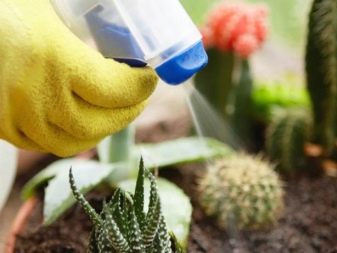
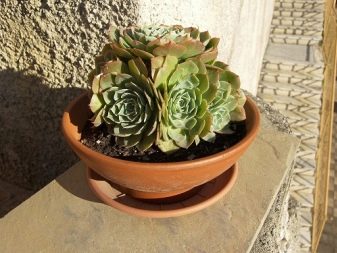
Possible problems
In both leaf and cuttings propagation, it is important to keep track of some points that can lead to problems and even death of the succulent. Wrinkles on the planting material are considered the norm, but if the fragments change their color to brown or soften, then it is not recommended to use them further. The humidity level must be monitored. At the stage of root emergence and germination, excess liquid can lead to mold and further decay. You can prevent this situation with the help of good drainage and the initial purchase of a pot with a sufficient number of holes.
It is worth watering the succulent, be sure to check the condition of the substrate with your finger. If it is still wet, then, despite the schedule, the procedure will have to be postponed.
We must not forget about the importance of sufficient lighting.
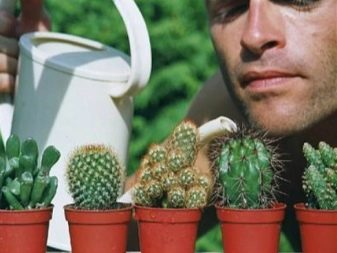
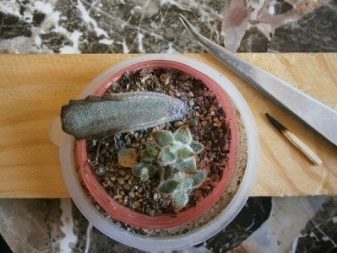
For information on how to propagate Hawortia and other succulents by shoots, see the video below.























































The comment was sent successfully.